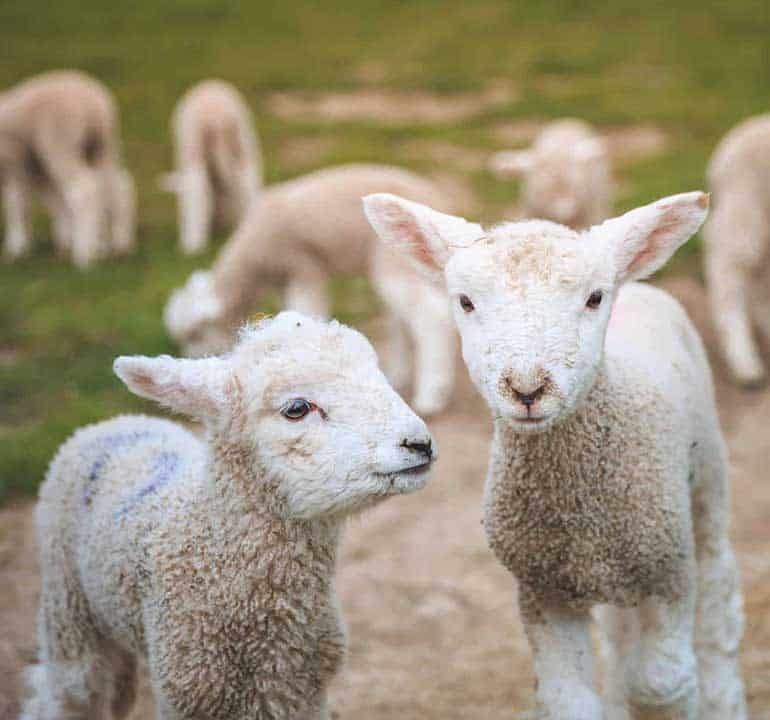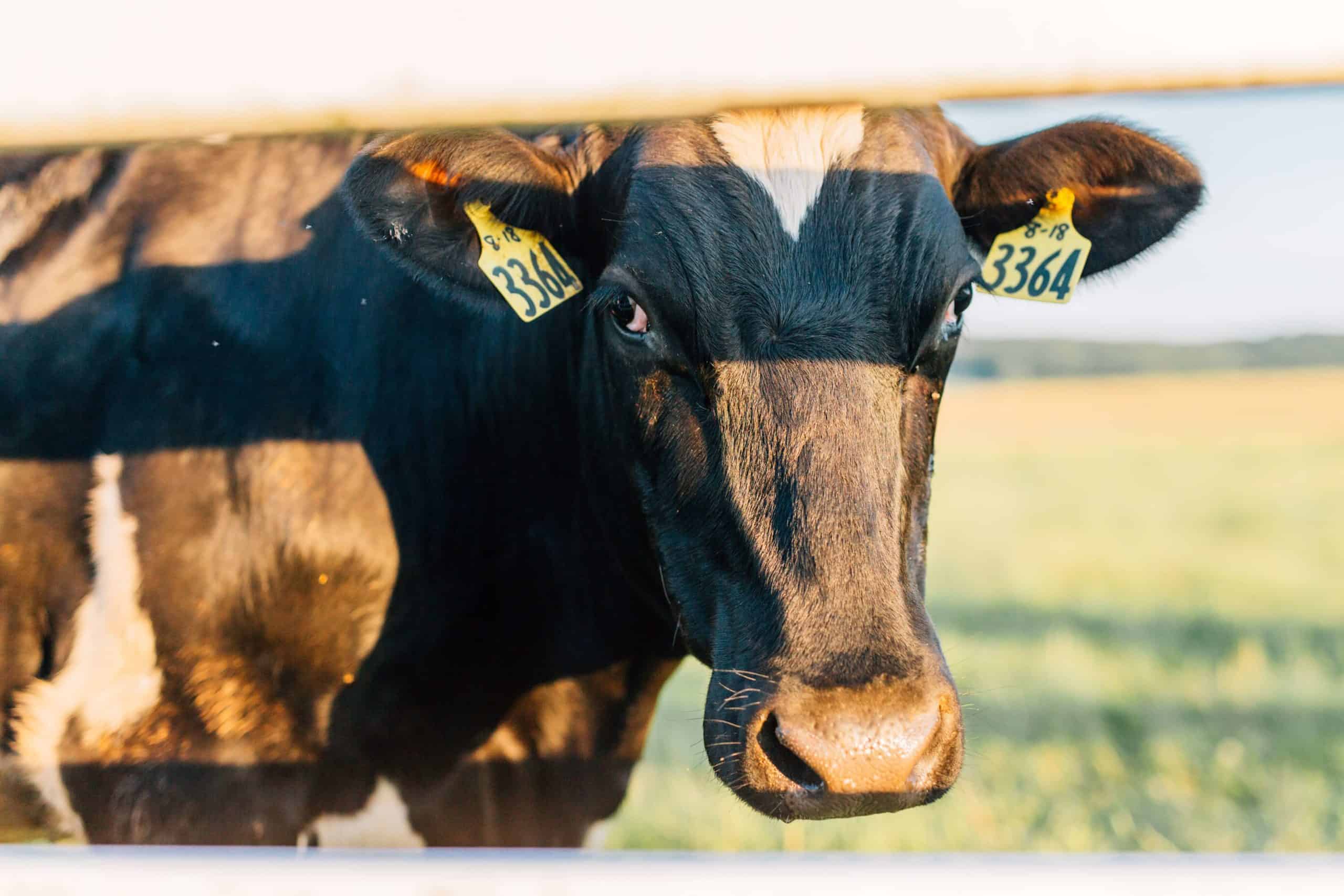New born lamb health

As soon after delivery as possible, a ewe’s udder should be checked for milk supply and potential problems, such as mastitis.
- Strip teats to remove the wax plug
- Observe lamb is nursing – a fed lamb should have visibly full stomach
- Assist non-nursing lambs – dry if necessary
- Tether a rejecting ewe to enable lamb(s) to feed
Disinfect navel cords
The navel of a newborn lamb provides a direct route for infection. Navel cords more than 2 inches long should be clipped closer to the body. The entire cord area should be disinfected soon after birth. On open field farming rounds the farmer should always carry an antiseptic such as Betadine™, as a matter of course.
The importance of colostrum
Colostrum contains a high level of several nutrients that are important for lamb health and performance. It contains a high level of antibodies, immunoglobulins that protect against a variety of infectious agents. At birth, the lamb does not carry any antibodies as antibodies do not cross the placenta.
It is critical that lambs receive colostrum during the first 18 hours of life in order to ensure adequate absorption of antibodies. Antibodies are large protein molecules that can cross the intestinal wall and enter the blood stream of the lamb only during the first 24 to 36 hours of life. Absorption of these antibodies is most efficient during the first few hours after birth.
It is recommended that lambs receive 10 percent of the body weight in colostrum by 24 hours after birth. This means that a 4.5kg lamb should consume 450gms of colostrum by 24 hours of age. Ideally, half of this should be consumed within 4 to 8 hours of birth.
All lambs need colostrum. The ideal colostrum source for supplemental feeding of lambs is from healthy ewes in one’s own flock. Ewes vary in the quantity and quality of colostrum they produce. Young ewes generally produce less colostrum because they also produce less milk. At lambing, ewes should be checked (stripping the teats) for the quality and quantity of colostrum.
Older ewes have had greater exposure to infectious agents and usually have a higher concentration of antibodies in their colostrum. Colostrum from dairy cows or goats may be used if ewe’s colostrum is not available.
Complications in newborn lambs
Hypothermia and starvation
Hypothermia and starvation are the two principal causes of early lamb mortality and may result in losses of 5-20% of lambs born alive.
Hypothermia – to maintain its body temperature, a newborn lamb must produce as much heat as it is losing to the environment. If it doesn’t, its body temperature will start to fall. A smaller lamb will chill faster than a larger lamb. Lambs with thicker coats will lose less heat. The quicker a ewe licks off the lamb, the less vulnerable it will be to chilling. Lambs born in drafty pens or outside with no shelter from the wind lose body heat quicker. Lambs born in colder temperatures obviously lose body heat more quickly than those born during moderate weather.
Lambs with hypothermia appear weak, gaunt, and hunched up. In severe cases, the lamb may be unable to hold its head up. The ears and mouth may feel cold. The lamb may lack suckling response. The normal body temperature for lambs is 38.8°C – 39.4°C. Lambs with temperatures below 37.7°C are considered hypothermic. A rectal thermometer can be used to assess body temperature.
It is important to get colostrum in newborn hypothermic lambs to elevate the body temperature. Tube feeding is an effective means of doing this. It may also be necessary to move the lamb to a warmer environment to elevate the body temperature.
Lamb starvation
Lamb starvation is the number one killer of lambs. It may be caused by:
- inadequate colostrum
- dam rejection
- mastitis
- teats – too large or close to the ground
- inadequate milk production
- joint injury or illness
- sore mouth
- difficult birth
Starvation typically occurs during the first three days of life. A lamb will be found standing with its head down, ears drooping back, or it may become too weak to stand. The stomach would be empty upon palpation. Shivering, shaking and hypothermia may follow but this hypothermic lamb is typically over 12 hours of age.
Warming a lamb
The importance of restoring a lamb to optimum body temperature cannot be overemphasised.
Instructions:
- If the lamb is wet, dry it off and wrap it in a towel or old woolen blanket
- Use a hair dryer to assist warming
- The lamb can be put into a warming box
- Heat lamps should be used sparingly
In newborn lambs, hypothermia usually results from exposure. In lambs over 24 hours of age, hypothermia is usually a result of starvation. Older lambs should be handled in a similar manner, except they do not need colostrum. Milk replacer can be fed with a bottle or tube feeder.

